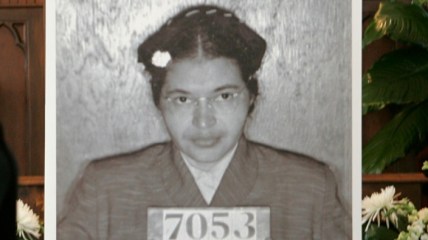Civil Rights Trail recognizes three children who integrated New Orleans schools
"You just don’t know how many people we’ve gone to that didn’t know the history of what happened in this building,” Leona Tate said.
The newest marker on the Louisiana Civil Rights Trail honors the McDonogh Three, the first Black students to integrate McDonogh 19 Elementary School in 1960.
On Tuesday, Lieutenant Governor Billy Nungesser helped unveil the new marker outside the Tate, Etienne, Prevost Center, formerly known as McDonogh 19 Elementary School, nola.com reports. The marker honors Leona Tate, Gail Etienne, and Tessie Prevost, the three six-year-old girls who made headlines in November 1960 when they integrated into Louisiana school, swiftly prompting the white students to flee.
“We are proud to tell this story of the ‘McDonogh Three’ and to commemorate an iconic landmark for visitors and Louisianans to know about, learn from and visit. This Louisiana Civil Rights Trail marker unveiling is a continuing effort to recognize and bring to life Louisiana’s role in the modern civil rights movement,” said Nungesser at the marker unveiling.
The McDonogh 19 Elementary School has been renamed after the girls as the Tate, Etienne, Prevost Center (TEP). The marker will be located at the entrance of their former first-grade classroom, per the report.
“You just don’t know how many people we’ve gone to that didn’t know the history of what happened in this building,” Tate said Tuesday morning. “It takes a lot – and I don’t like talking about it – to tell them the story. But we’re here and we’ll have some racial healing in this building.”
The parents of the McDonogh Three volunteered them to participate in the integration of the New Orleans Public Schools, at the request of the National Association for the Advancement of Colored People (NAACP). According to the report, 135 Black families applied to send their children to an all-White school. Six children were initially chosen, two dropped out before the school year started that year.
At the time, McDonogh 19 Elementary School was selected for the state’s desegregation initiative. When Tate, Etienne, Prevost integrated on November 14, 1960, they were escorted by U.S. Marshals every day. They were the only students in attendance for several months after white parents pulled their children from the school.
“The girls had recess indoors, ate under staircases, and the windows were covered at all times,” an official press release says, as reported by brproud.com.
“We must continue to tell all generations their story of how in 1960 three little girls in New Orleans were the impetus for many of the future civil rights,” said Terri F. Love, chief judge of the Louisiana Fourth Circuit Court of Appeal, who spoke at the unveiling.
William Frantz Elementary was also selected to be desegregated in 1960, and at just six years old, Ruby Bridges integrated. Bridges unintentionally set the world on fire in 1960 when she followed a court desegregation order allowing Black kids to enter all-white schools, theGrio previously reported. As a child, Bridges had no idea she was making history.
“In my tiny mind I thought this was just something that happened on my street and in my community,” Bridges said. “I didn’t realize that it was a part of a much broader movement.”
The Associated Press reported that Ruby’s father, Abon Bridges, was initially reluctant to send his daughter to the all-white William Frantz Elementary School as a first-grader, at the request of the NAACP. But his wife insisted.
According to the National Women’s History Museum, Lucille Bridges wanted her daughter to have the education she never had. She walked her daughter to school every day, the museum said.
This article contains additional reporting from Keydra Manns
TheGrio is now on your TV via Apple TV, Amazon Fire, Roku, and Android TV. Also, please download theGrio mobile apps today!


